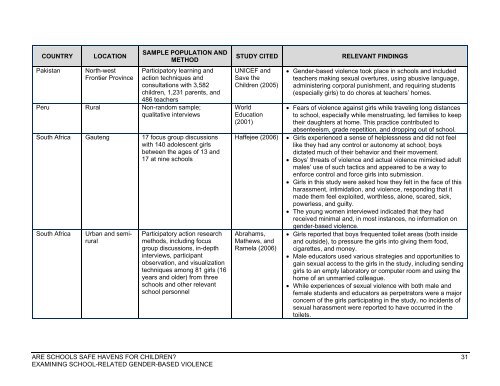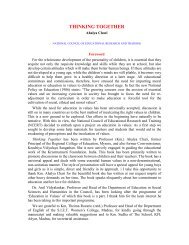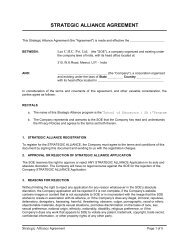ARE SCHOOLS SAFE HAVENS FOR CHILDREN?
ARE SCHOOLS SAFE HAVENS FOR CHILDREN?
ARE SCHOOLS SAFE HAVENS FOR CHILDREN?
Create successful ePaper yourself
Turn your PDF publications into a flip-book with our unique Google optimized e-Paper software.
COUNTRYPakistanLOCATIONNorth-westFrontier ProvinceSAMPLE POPULATION ANDMETHODParticipatory learning andaction techniques andconsultations with 3,582children, 1,231 parents, and486 teachersPeru Rural Non-random sample;qualitative interviewsSouth Africa Gauteng 17 focus group discussionswith 140 adolescent girlsbetween the ages of 13 and17 at nine schoolsSouth AfricaUrban and semiruralParticipatory action researchmethods, including focusgroup discussions, in-depthinterviews, participantobservation, and visualizationtechniques among 81 girls (16years and older) from threeschools and other relevantschool personnelSTUDY CITEDUNICEF andSave theChildren (2005)WorldEducation(2001)Haffejee (2006)Abrahams,Mathews, andRamela (2006)RELEVANT FINDINGS• Gender-based violence took place in schools and includedteachers making sexual overtures, using abusive language,administering corporal punishment, and requiring students(especially girls) to do chores at teachers’ homes.• Fears of violence against girls while traveling long distancesto school, especially while menstruating, led families to keeptheir daughters at home. This practice contributed toabsenteeism, grade repetition, and dropping out of school.• Girls experienced a sense of helplessness and did not feellike they had any control or autonomy at school; boysdictated much of their behavior and their movement.• Boys’ threats of violence and actual violence mimicked adultmales’ use of such tactics and appeared to be a way toenforce control and force girls into submission.• Girls in this study were asked how they felt in the face of thisharassment, intimidation, and violence, responding that itmade them feel exploited, worthless, alone, scared, sick,powerless, and guilty.• The young women interviewed indicated that they hadreceived minimal and, in most instances, no information ongender-based violence.• Girls reported that boys frequented toilet areas (both insideand outside), to pressure the girls into giving them food,cigarettes, and money.• Male educators used various strategies and opportunities togain sexual access to the girls in the study, including sendinggirls to an empty laboratory or computer room and using thehome of an unmarried colleague.• While experiences of sexual violence with both male andfemale students and educators as perpetrators were a majorconcern of the girls participating in the study, no incidents ofsexual harassment were reported to have occurred in thetoilets.<strong>ARE</strong> <strong>SCHOOLS</strong> <strong>SAFE</strong> <strong>HAVENS</strong> <strong>FOR</strong> <strong>CHILDREN</strong>?EXAMINING SCHOOL-RELATED GENDER-BASED VIOLENCE31
















